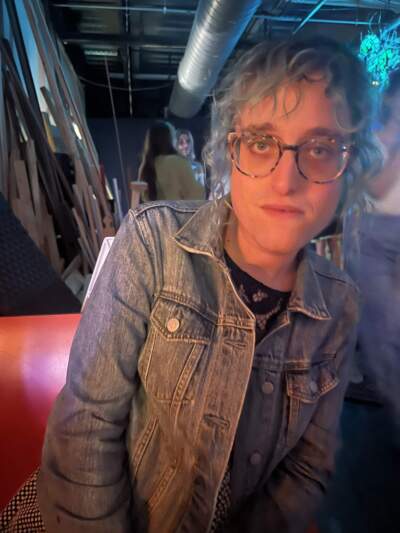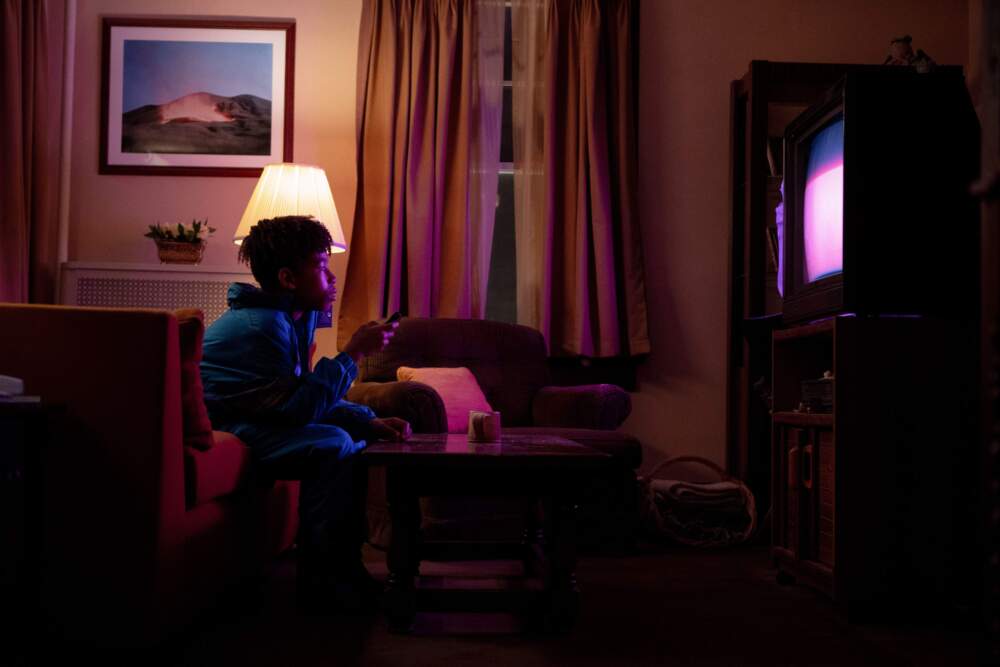Advertisement
Writer-director Jane Schoenbrun honored as Coolidge's Breakthrough Artist

It’s not often in this business that you get to say somebody’s doing something genuinely original, but with only two narrative features under their belt, writer-director Jane Schoenbrun has staked out a unique vantage point in American cinema. The filmmaker, who will be honored this Saturday, May 11, with the Coolidge Corner Theatre Foundation’s Breakthrough Artist Award, interrogates not just the roles screens play in our lives but the roles we play while projecting ourselves onto them.

Schoenbrun’s haunting 2021 feature debut “We’re All Going to the World’s Fair” followed a lonely suburban tween down an eerie, internet rabbit hole, blurring lines in an uneasy movie for an age when the virtual and reality feel like they’ve become interchangeable. Schoenbrun’s eagerly anticipated follow-up, “I Saw the TV Glow,” had its local premiere May 2 at the Independent Film Festival Boston and opens at the Coolidge and other area theaters on Friday, May 10. Both a logical extension of “World’s Fair” and a huge leap forward logistically, this millennial “Videodrome” is about two teens who become fixated on a canceled ‘90s television program, channeling their fears and desires into an obsessive fandom that opens a window to a secret and sometimes sinister world denied by societal repression.
The Coolidge ceremony will be a sort of homecoming for the upstate New York native, who studied film at Boston University and made their first IFFBoston appearance back in 2016, as a producer of the omnibus “Collective: Unconscious,” in which five New York filmmakers adapted each other’s dreams. “We’re All Going to the World’s Fair” played as part of the festival’s virtual edition in 2021, where it was arguably the only film that benefited from being watched online in isolation. (It unnerved the heck out of me on my iPad under the covers at one in the morning.) Schoenbrun is quick to credit the area’s local movie theaters with helping to nurture their then-nascent cinephilia.
“I was a 20-minute walk from the Coolidge for at least a year of my life,” the filmmaker explained via a Zoom call from Chicago. “I remember going to my fair share of midnight movies there. I remember seeing ‘Zombie,’ the Italian film. It was early in my sophomore year and we all donned zombie makeup and dressed up. It’s one of my happiest memories of college, this festive outing to the Coolidge with my new gang of college friends in full zombie regalia.” (In the kind of insane coincidence that can only happen in our repertory film community, “Zombie” is screening at the Brattle Theatre the night before Schoenbrun’s award ceremony at the Coolidge. Costumes optional.)
“Boston is definitely a city I associate with cinema,” said Schoenbrun. “The Brattle is another theater that’s really close to my heart, and the Harvard Film Archive and even the Kendall [Square Cinema]. I remember skipping class to go see ‘Synecdoche, New York’ there the day it opened and leaving absolutely devastated. Having a place like the Coolidge close to me, it was the first time I’d had that in my life. You know, I came from the suburbs, and so having a beautiful, older cinema with such proper love for the medium was a really exciting thing.”

Indeed, the suburbs are deserts in Schoenbrun’s films, desolate wastelands driving their characters to seek solace in screens. There’s something darkly humorous about the way Schoenbrun shoots sights like an empty toy store in the opening of “World’s Fair,” or the chintzy neon ball pits of the ironically named Fun Center seen in “TV Glow.” The filmmaker laughed, “Everyone was confused about why I felt so strongly about filming the exterior of this decrepit Toys ‘R’ Us. I think it’s a playful cynicism, a sense of humor that comes naturally to me. How I got through was turning that gaze on everything around me… And you haven’t lived until you’ve spent a night directing a movie in the windowless cavern that is New Jersey’s Funplex.”
Owen, the protagonist of “I Saw the TV Glow” (heartbreakingly played by Ian Foreman as a child and Justice Smith as a teen) is a cowed, gentle middle-schooler with a sick mother and a terrifying father (Limp Bizkit frontman Fred Durst). His whole world opens up when scary, surly ninth grader Maddy (Brigette Lundy-Paine) introduces him to “The Pink Opaque,” a “Buffy the Vampire Slayer” by way of “Goosebumps” supernatural kids’ program airing past Owen’s bedtime on the fictional Young Adult Network. The show is full of Sapphic overtones — “Buffy” fans will spot that one of the leads is named Tara for a reason — and Owen finds himself intensely identifying with a character called Isabel, who stirs up feelings he cannot express. When Maddy asks if he likes boys or girls, Owen answers, “I like TV shows.”
Schoenbrun’s own personal “Pink Opaque” was “Buffy the Vampire Slayer.” “That’s at the center of the movie and was the show that I put the most long-term love into, the one that kind of taught me everything I know about, I don’t know, everything. It was where all my emotional energy went,” they explained. “I think as a trans person who now looks back at their obsessive youth caring more about Buffy’s high school experience than their own, it’s hard not for me to interrogate the ways in which the screen was a place for me to put my love that was safe, because the screen didn’t see me like I saw it. The fiction that was available to me on the screen was almost like microdosing something that I wasn’t getting in my real life.”

It wouldn’t be fair to give too much away, but things take a turn into the surreal when “The Pink Opaque” is abruptly canceled. The show ends on a grisly, unfair cliffhanger to rival the shattering Season Two finale of David Lynch’s “Twin Peaks” back in 1991 that left some viewers (ahem) scarred for life. “I dreamed about ‘Twin Peaks’ coming back for years, like, for a decade before it actually did, because of the unresolved wrongness of that ending,” Schoenbrun admitted. “The way something like that can sink its hooks into you psychologically, I think, is one of the powers of fiction that this film is reflecting on.”
Yet, despite the throwback signifiers of smuggled VHS tapes and scenes lit by Day-Glo Fruitopia vending machines, “I Saw the TV Glow” has an uneasy relationship with the characters’ obsessive fandom, and there’s nothing nostalgic about it. “I’m probably a Gen Xer at heart in this way,” says the 37-year-old Schoenbrun. “I grew up with a lot of ambivalence about fan and nerd culture, it always struck me as a trap in some way. These characters are turning to the screen because they feel that through fiction they can learn or express something of themselves that they can’t in real life. But I think the work is also deeply aware of the limits of that. That’s something I could speak to with complete authority, because I maybe misspent my youth watching and being obsessed with fiction.”
“I Saw the TV Glow” opens in theaters on Friday, May 10. Jane Schoenbrun will receive the Coolidge Corner Theatre Foundation’s Breakthrough Artist Award on Saturday, May 11.
